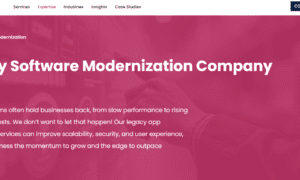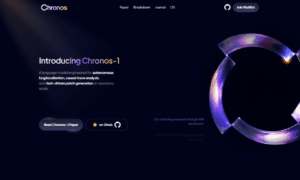In today’s fast-paced digital landscape, businesses face a critical challenge: balancing efficiency with innovation. While off-the-shelf software once seemed convenient, companies increasingly realize that generic tools often fail to address their unique needs. This gap has sparked a global shift toward custom software development, where tailored solutions empower businesses to streamline operations, reduce costs, and outpace competitors.
The Limitations of Off-the-Shelf Software
Pre-built software may offer quick fixes, but its rigid design often leads to long-term inefficiencies:
Inflexibility
Generic tools force businesses to adapt workflows to the software, not vice versa. For example, a retail chain might struggle with inventory management if its off-the-shelf platform lacks real-time tracking features.
Scalability Issues
As companies grow, generic software often becomes outdated. A startup using a basic CRM might find it inadequate when expanding into new markets. With custom software development, businesses can create scalable solutions that grow with them, adapting to new needs without the limitations of pre-built software.
Hidden Costs
Licensing fees, workarounds, and manual data entry add up over time, eroding savings from the initial low cost.
Key Benefits of Custom Software Development
Precision and Alignment
Custom software eliminates redundant features, focusing on workflows specific to your business. For instance, a healthcare provider might build a platform integrating patient records, billing, and telemedicine into one interface. Developers ensure seamless connectivity with existing systems (e.g., ERP, CRM), avoiding data silos.
Scalability and Adaptability
Modular designs allow incremental updates without overhauling the entire system. Businesses can pivot quickly in response to market shifts, such as adding e-commerce features during a pandemic.
Cost Efficiency
Avoid recurring licensing fees and reduce manual labour (e.g., automating payroll or inventory). Higher productivity and reduced operational costs translate to measurable returns.
Competitive Advantage
Unique tools set businesses apart. For example, a manufacturing firm might develop IoT-enabled dashboards to optimize supply chains. Custom software enables novel processes, such as AI-driven customer analytics in retail.
Industries Leading the Shift to Custom Software
Manufacturing
Manufacturing companies adopt custom software to optimize asset management and demand forecasting. For example, IoT sensor integration in equipment enables real-time monitoring of component wear, preventing downtime. ERP systems with resource planning modules help control overtime costs and product quality, particularly in discrete manufacturing.
Retail
Retailers tailor software for hybrid sales models (online + offline). Custom platforms with AI analytics predict demand, reduce cart abandonment, and boost average order value. Integration with CRM and ERP ensures data synchronization across warehouses, websites, and mobile apps.
Energy and Utilities
Utility providers use custom solutions for infrastructure management. For instance, predictive maintenance systems prevent critical part shortages, while data analytics modules optimize resource distribution. ERP systems with a two-tier architecture enable gradual cloud migration without operational disruptions.
Wholesale and Logistics
Wholesalers and logistics firms deploy software to automate supply chains. Custom platforms with IoT integration and machine learning algorithms reduce order-to-payment cycles. ERP modules for inventory management minimize overstocking and shortages.
Service Industries
Accounting, legal, and engineering firms require mobile ERP tools for real-time project management. Custom solutions track project profitability, balance resources, and automate reporting. Cloud integration simplifies remote collaboration.
Finance and Banking
Financial institutions leverage custom software for regulatory compliance (e.g., GDPR, HIPAA). ERP systems with risk analysis modules and generative AI automate transaction screening. Built-in data visualization tools streamline stakeholder reporting.
Key Technologies:
- ERP Integration: Synchronizes data across departments (finance, logistics, sales).
- Cloud Solutions: Reduce infrastructure costs and simplify scalability.
- AI and Machine Learning: Automate demand forecasting, inventory management, and risk analysis.
These industries demonstrate how custom software drives digital transformation by unifying data, processes, and innovation.
Overcoming Common Misconceptions
- Myth: “Custom software is too expensive.”
- Reality: While upfront costs may seem high, long-term savings and ROI often outweigh generic software’s hidden fees.
- Myth: “Development takes too long.”
- Reality: Agile methodologies prioritize iterative progress, quickly delivering functional MVPs (Minimum Viable Products).
- Myth: “Maintenance is complex.”
- Reality: Modular designs and dedicated support teams simplify updates and troubleshooting.
Conclusion
In a world where one-size-fits-all solutions no longer suffice, custom software development is the key to unlocking efficiency, innovation, and growth. By aligning technology with unique business needs, companies can cut costs, enhance scalability, and stay ahead of competitors. Whether you’re a startup or an enterprise, tailored solutions ensure your tools evolve as you do.



































